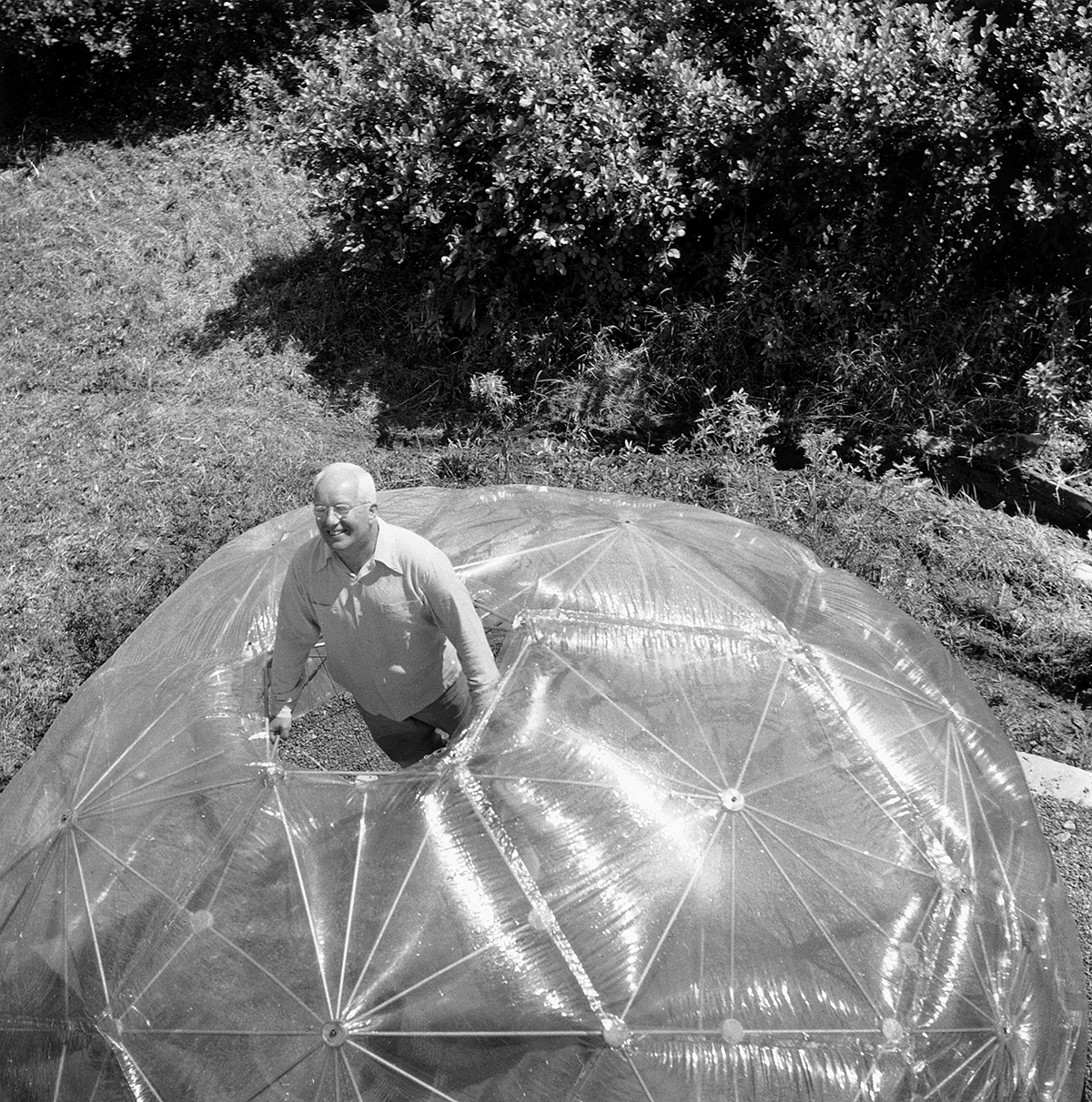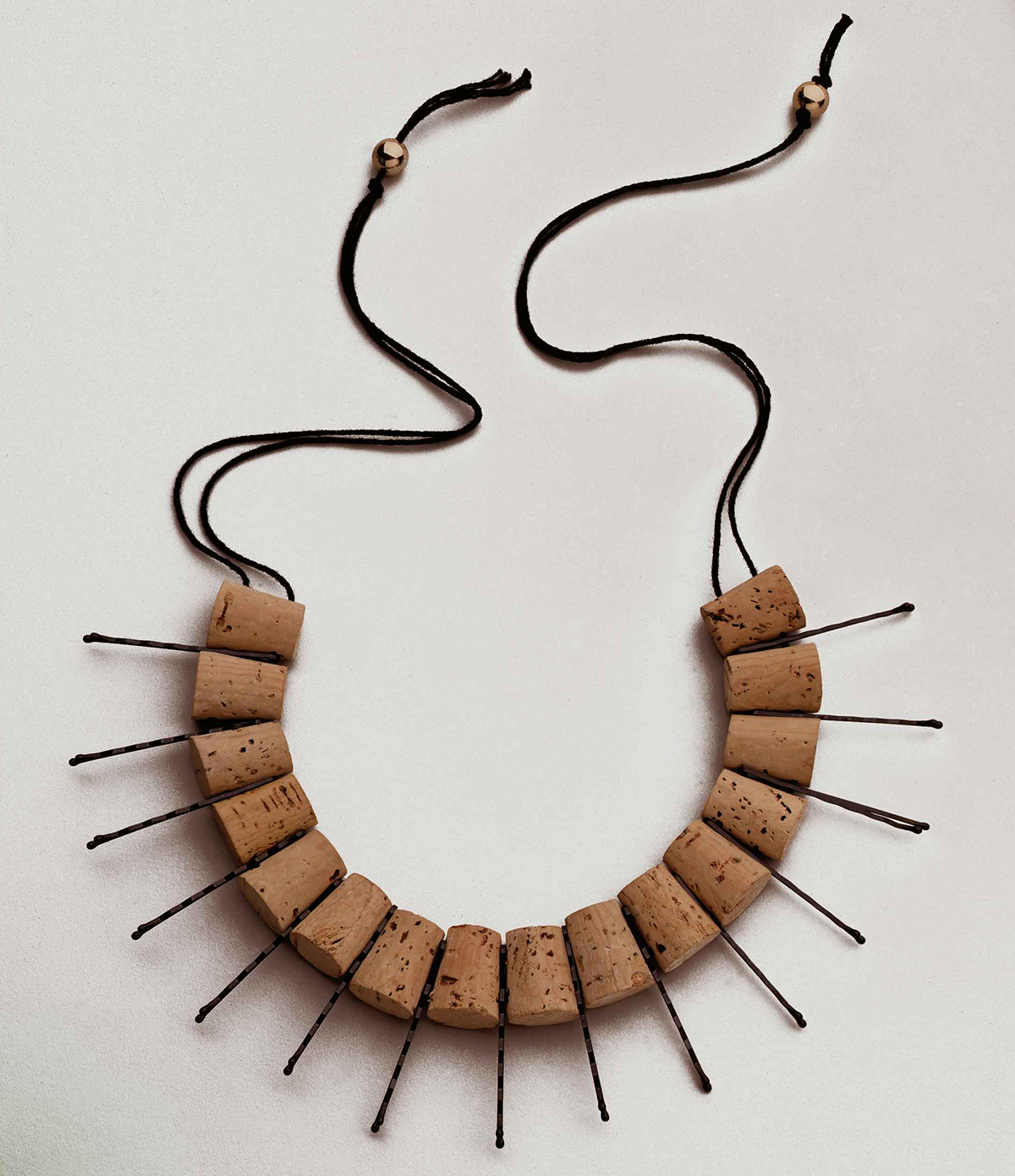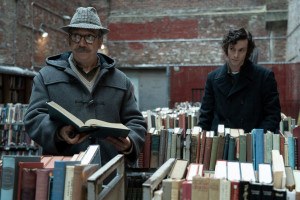In Its Biggest Undertaking to Date, ICA Debuts ‘Black Mountain College’ Exhibition

Students from Harvard and Boston Conservatory will perform Merce Cunningham’s choreography in the galleries throughout the exhibition’s run. / Photo by Liza Voll provided
The Institute of Contemporary Art‘s latest exhibition, “Leap Before You Look: Black Mountain College 1933-1957,” is a treasure trove for art history enthusiasts.
The small, experimental liberal arts college in North Carolina was where German artists Josef and Anni Albers taught for 16 years after pressure from the Nazis closed down Bauhaus, the esteemed art school where the couple had met. The ICA exhibition features numerous works by Josef, who revolutionized color theory, and Anni, who in 1949 would become the first textile artist to be given a one-person show at the Museum of Modern Art.
Black Mountain College was also where Buckminster Fuller successfully erected his first geodesic dome. The ICA exhibition displays a preliminary drawing, models, and a photograph by Hazel Larsen Archer of the final product.
The school was where legendary modern dance choreographer Merce Cunningham formed his eponymous dance company and where his collaborator and life partner John Cage staged what’s considered to be the first “happening,” a type of performance art. It’s where Willem de Kooning, along with wife and fellow abstract expressionist Elaine, found refuge after critics panned his first one-man show in Manhattan.
The list of artists—Robert Rauschenberg, Franz Kline, Robert Motherwell, Ray Johnson, and so on—who spent time at Black Mountain College as students and teachers is extensive.
“What’s important to recognize is that at the moment when many of these people came to Black Mountain College, they’re not the great famous artists that we know of today,” said assistant curator Ruth Erickson, who organized the exhibition with former chief curator Helen Molesworth, at a press preview. “They were very young. Many of them as students were sort of groping at what it meant for them to be making art.

Buckminster Fuller erected his first geodesic dome at Black Mountain College / Photo by Hazel Larsen Archer provided
But even those unfamiliar with these artists and their impact on the course of art history might find it interesting to read the exhibition as a case study of the American education system in which a briefly existing progressive college empowered students to regard themselves as their instructors’ equals.
“Students were fundamental to the operations of the college. That was how the college survived—through this continuation of this kind of involvement,” said Erickson, bringing up examples of students digging the ditch for a new campus building and a collaboration between Anni Albers and student Alexander Reed on a series of necklaces. “There was a real desire to make that relationship [between teachers and students] less hierarchical.”
Although Black Mountain College was a liberal arts college and not exclusively an art school—it offered courses in natural and social sciences, as well as other subjects—it did encourage students to learn by doing through an arts-centric curriculum.
“[Founder John Rice] had this belief that the arts uniquely provided an education that would lead to a kind of critical self-realization,” said Erickson. “That the kind of critical observation and thinking that making an artwork involves would prepares individuals and students to participate in democratic society.”
Led by this belief, Rice invited Josef Albers to the faculty at Black Mountain College, and Albers was then responsible for inviting other artists to teach at the school, even if just for a week or a summer.
“Although Black Mountain College was in the rural south, it was an incredibly cosmopolitan space. It really was this crossroads for people from all over the world,” said Erickson. “What we’re interested in is how the college created a set of conditions—either what led to an artist coming in to be invited and what they brought with them or how the experience at Black Mountain College might’ve informed what they made after.”
Many of the artists who spent time at the college are still working today. In fact, one former student, Gerald Van de Wiele, who’s featured in the exhibition, surprised Erickson when he approached her after the press preview.
“There are a million stories that you could tell about Black Mountain College. This is a really huge exhibition that we put together, and there could be yet another,” said the curator, musing that she still receives phone calls from people willing to share works by relatives that attended the school.

Instructor Anni Albers collaborated with student Alexander Reed on a series of necklaces made from found objects. / Photo provided
The exhibition, which took four years to organize, is the ICA’s biggest curatorial undertaking to date. In addition to almost 200 works by nearly 100 artists, it features a comprehensive performing arts program.
A grand piano and sprung dance floor have been installed in the galleries, where former Merce Cunningham Dance Company member Silas Riener will recreate “Changeling,” a piece by Cunningham thought to have been lost, but rediscovered in a film canister in Hamburg last year. Students from Harvard and the Boston Conservatory will perform other Cunningham dances throughout the exhibition’s run, and a group of local artists will reimagine the happening by John Cage, whose music, along with other composers’, also appears in a soundscape that can be heard throughout the galleries.
Founded in the midst of the Great Depression and suffering from financial trouble throughout its 24-year run, Black Mountain College closed down in 1957. But even despite the lack of money, Erickson feels that the end was always inevitable.
“I think the idea of creating a college like that also meant that it was always going to end if it did not end up folding into and becoming the bureaucratic institution it didn’t want to be,” she said. “I feel like in Black Mountain College’s DNA was its undoing.”
“Leap Before You Look: Black Mountain College 1933-1957” is on view at the ICA through January 24, 2016, after which it will travel to the Armand Hammer Museum in Los Angeles and the Wexner Center for the Arts in Columbus, Ohio. For a full schedule of related performances and events, visit icaboston.org.


